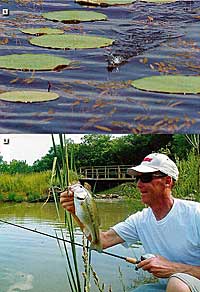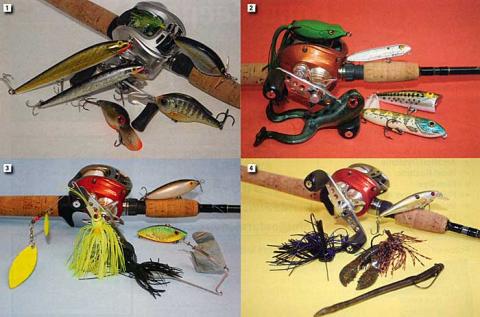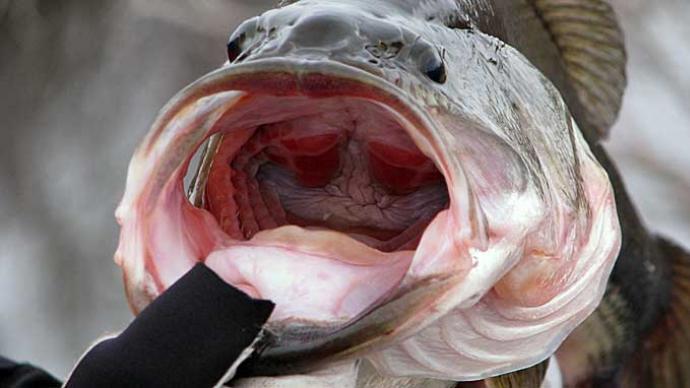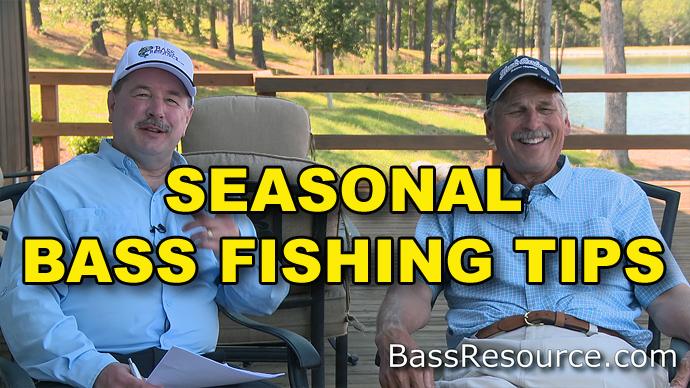Finding and catching fish in a pond would be easier if I could only get the fish to tweet me their location and what lure they want. A simple message like, "I am over here, next to the laying down log and hungry for a frog." I could tweet back, "A delicious frog lure is on the way, open wide!"
However, fish do not tweet, so it's up to the angler to learn their locations, why they are there, and which part of the water column to catch them.
People fishing ponds or small lakes have a distinct advantage over anglers fishing large reservoirs with miles of shoreline, vast open water, and deep water. A pond or small lake has less water to cover and find fish. Anglers are just crime scene investigators who use fishing poles, reels, lines, lures, tackle boxes, and boats instead of forensic tools such as UV lights, fingerprint dusters, and microscopes to locate and catch fish.
All fish in any pond or small lake will be located in one of these layers in the water column: surface, sub-surface to near the bottom, or bottom, according to the season, structure, and cover. Other factors influencing these fish are weather or water and light conditions.
Four Seasons, Three Layers - Spring
During the spring, bass will be in one of the following patterns: pre-spawn, spawning, or post-spawn. During this period, the majority of bass will be located shallow. The surface layer offers a broad selection of forage for bass to feed on. When fishing the surface layer, productive lures include floating minnows, poppers, stick baits retrieved in a 'walk-the-dog' technique, and wake baits that run on the surface or immediately under the surface but do not dive down. Soft swimbaits can be deadly on bass if there is a shad spawn during this period. Key locations can be encapsulated boat dock floats, rocky flats, or limbs hanging down on the lake's surface. During post-spawn, bass like to suspend over deep water, close to where they spawned. Generally, these bass are somewhat hard to catch but will attack a wake bait when reeled slowly. Another bait that professional anglers kept a secret for years to catch fish after the bass spawn is a twin spin bream-shaped custom-built balsa wood prop bait.
In the spring, the sub-surface water layer is minimal since most of the bass are shallow. Some bass will be chasing bream away from fry or feeding on bream while guarding their spawning beds. Productive sub-surface lures during this time are soft plastic jerk baits and bream-color and shaped crankbaits.
Bass on the bottom layer will be feeding on crawfish. Crawfish-colored and shaped lures and pig, soft plastic crawfish-shaped baits rigged Texas-style, and grubs reeled slowly across the bottom. Unlike any other time of the year, spawning bass are highly vulnerable to being caught off their spawning beds, disrupting the spawning process. How a pond or small lake owner ethically approaches this situation is entirely up to them. If anglers do catch bass off their beds, studies have shown that if they are caught quickly and then released immediately back into the water, this will increase their chances of continuing their reproductive process or allow the male to continue to guard fry against predators.
Summer
Summer is prime time for surface fishing ponds and small lakes. Bass are feeding on amphibians and other abundant forage. Topwater baits like Pop-R, Zara Spook, or double prop baits are productive lures; however, if the pond has aquatic vegetation, no matter if it's emergent, rooted/floating, submersed, or free-floating, a soft plastic frog worked across the surface or near vegetation will result in massive, heart-stopping explosions during the summer months. During this time, effective lures for catching bass include lipless crankbaits, soft plastic jerk baits, in-line spinnerbaits, spinnerbaits, and swimbaits. These are fast-moving baits that generate a reaction bite. During this period, the areas around fountains or aerators become prime locations for forage and bass.
How deep bass will be located during the summer months depends on the pond's water condition. It's not uncommon for a pond owner to utilize some aeration system to reduce the buildup of organic muck and de-stratify the pond. Bass can be caught in deep, oxygen-rich water on a Carolina rig or Texas-rigged soft plastic baits in these ponds. Anglers should target brush piles, man-made habitats, and ledges.
Hollow Versus Solid Frogs
Anglers choose between two types of frogs that catch fish in or around aquatic vegetation: a hollow rubber frog or a solid-bodied soft frog sometimes referred to as a toad. The hollow rubber frog can be retrieved in a 'walk-the-dog' or stop-and-go action, while the toad is made for reeling in on the surface.
Fall

During the fall, bass go on a feeding frenzy preparing for the winter months. Fast, big, noisy surface moving baits draw bass from long distances. Double propped topwater baits, Zara Spooks, buzz baits, and chuggers presented near cover will draw strikes. For a short period, soft plastic and hollow-belly frogs will be effective lures; usually, when the temperature drops, so will the frog bite.
In the fall, the sub-surface comes alive with forage. Schools of bass cruise the flats searching for schools of baitfish. This sub¬surface bass can be caught on spinnerbaits, lipless crankbaits, and swimbaits. Depending on water conditions, some bass will still be located in deep brush piles or man-made habitats on the bottom layer that pond owners strategically put in. Texas-rigged plastic worms, beaver style, or creature baits can be worked slowly in the cover to catch these fish.
The only drawback to fall is cold fronts moving through, dropping outside air and water temperatures. The best way to catch bass after a cold front passes is flipping or pitching a Texas-rigged soft plastic bait close to cover.
Winter
Winter is the slowest time of the year for fishing. Anglers can only fish sub-surface and bottom layers in northern lakes and ponds. Prepared bait, live bait, or jigs are popular choices for catching fish under the ice. Southern anglers will still have open water for casting lures. The surface layer bites are non-existent. The best bite may be the sub-surface bite on a jerk bait or crankbait. Depending on water conditions and lake bottom composition, anglers should, in ideal situations, be able to catch bass in deep brush piles or man-made habitats. A black/blue jig with a matching black/ blue trailer or dark-colored worm rigged on a shaky head jig is productive lures when probing the bottom layer.
There is one exception to going deep during winter or early spring months. Bass will, at times, move into shallow water after consecutive days of direct sun. A shallow diving, wide wobble crankbait, fished around 45-degree banks near the dam area or area of direct sunlight, will be most productive.
Live Bait
When fishing a pond or small lake, there are two times to use live bait: fishing for fun; the other is when the bass refuse to bite artificial lures. To catch bass, anglers still need to present live bait in the appropriate layer. Crickets, frogs, dragonflies, and toads can be fished on a free line when bass feed on the surface. Popular live baits for fishing sub-surface include crickets, minnows, lizards, grubs, or worms. These can be rigged with a bobber and a small split shot for casting. A drop shot rig is a technique for rigging live bait that suspends off the bottom. The hook on this setup is tied above the weight. The leader determines how far off the bottom from the weight to the hook. This is an effective technique when the bottom of the pond has algae. If the bottom layer is free of algae, try split-shotting a live worm or crawfish.
Where the Fish Are
To be successful when fishing ponds or small lakes, anglers must first break the lake down into three layers: surface, sub-surface, and bottom according to the season. When fishing the surface layer, explosive topwater strikes are the norm. Fast-moving lures like lipless crankbaits or spinnerbaits get reaction bites in the sub-surface layer, and slow-moving crawfish or night crawler-imitating lures provoke fish into biting in the bottom layer. Live bait can also be used in any layer, depending on the time of year.
So, the following tweet I receive will not come from a bass but from my fishing buddy with information on where and what the bass are biting on. Remember, fish, don't tweet.
Brad Wiegmann is a full-time fishing guide on Lake SWEPCO and Beaver Lake in Northwest Arkansas. He is also a free-lance outdoor writer for several fishing magazines and has a weekly newspaper column called "Speaking of Fishing." Besides writing articles for his website www.bradwiegmann.com, you may see him fishing bass tournaments, doing seminars, working outdoor shows, or being featured in outdoor magazines such as BASSMASTER, Outdoor Life, and Arkansas Sportsman.
Reprinted with permission from Pond Boss Magazine





